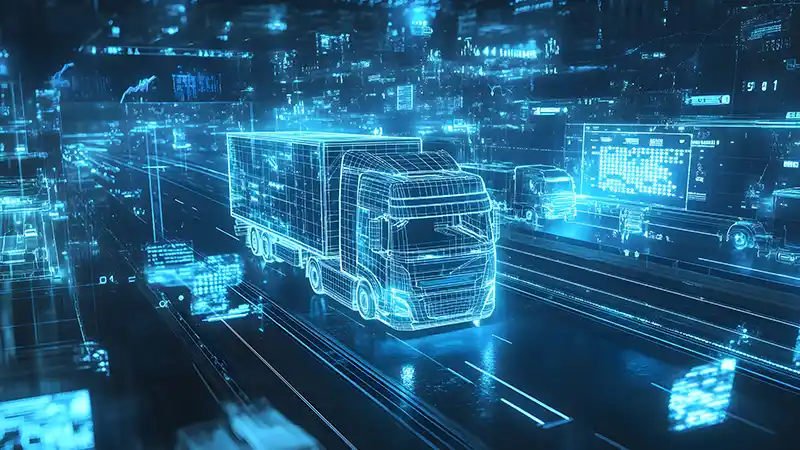The American trucking industry stands at a crossroads in 2025. After years of digital transformation, this year marks a new era of acceleration. The pace of technological change, the urgency of decarbonization, and the pressure to improve safety and efficiency have converged to make 2025 a watershed for the sector. Fleets, OEMs, and technology providers are launching more new products, platforms, and pilot programs than ever before. At the same time, an unprecedented calendar of industry events, expos, and summits is giving fleets a front-row seat to innovation.
Yet, for all the buzz, the path forward is anything but simple. Fleets must separate hype from reality, choose investments wisely, and ensure their teams are ready for what’s next. This article offers a comprehensive, narrative look at the most important launches, breakthroughs, and industry gatherings of 2025, exploring not just the technology, but its impact on people, operations, and the future of freight.
The Big Picture: Forces Shaping the 2025 Tech Boom
The market drivers behind this year’s tech explosion are powerful and varied. First, regulatory mandates are accelerating: California’s Advanced Clean Fleets rule, the EPA’s new emissions standards, and a patchwork of state and federal incentives are pushing fleets to decarbonize. Second, supply chain volatility and cost pressures are forcing carriers to seek new efficiencies. Third, a wave of private investment—from legacy OEMs to Silicon Valley, has unleashed a flood of new products and platforms.
For many fleets, the challenge is not finding innovation, but finding what works. The winners will be those who can pilot new tools, scale what delivers ROI, and build a culture of continuous adaptation.
Major Truck Launches and Product Announcements
Electric and Hydrogen Trucks Go Mainstream
The biggest story of 2025 is the arrival of zero-emission trucks at scale. After years of pilots, the industry is witnessing the first mass deliveries of battery-electric and hydrogen fuel cell Class 8 tractors.
Tesla Semi: No longer a novelty, the Semi is in full production, with fleets like PepsiCo, Walmart, and Schneider taking delivery of hundreds of units. The latest model boasts a 500-mile range and a revamped Megacharger network, with charging stations now open at major logistics hubs from Los Angeles to Chicago.
Freightliner eCascadia 2.0: Daimler’s flagship BEV features improved battery density, modular charging, and integrated telematics for real-time monitoring. The eCascadia’s new lease program is making it accessible to mid-sized fleets, and Daimler’s partnership with utilities is accelerating depot charging deployments.
Volvo VNR Electric Extended Range: Designed for regional and drayage, Volvo’s new VNR offers a 350-mile range and fast-charging under 90 minutes. Volvo’s “Total Care” program bundles maintenance, telematics, and charging support into a single monthly payment, reducing adoption barriers.
Nikola Tre FCEV: Hydrogen fuel cell trucks are finally hitting the road in California, Texas, and the Midwest. Nikola’s partnership with TravelCenters of America is rolling out hydrogen fueling at key truck stops, and early fleet adopters report promising results on long-haul and heavy-duty applications.
Hyundai XCIENT Fuel Cell: Hyundai’s FCEV is making waves in port drayage and regional delivery, with a focus on reliability and modular fueling infrastructure.
These launches are not happening in isolation. OEMs are rolling out new financing, lease, and maintenance options, and collaborating with utilities, charging networks, and hydrogen suppliers to smooth the transition for fleets of all sizes.
Autonomous Trucking Hits the Highway
2025 is the year autonomous trucking moves from pilot to commercial reality. Aurora, Kodiak, and Waymo Via have all launched fully driverless operations on select Texas corridors, moving freight between Dallas, Houston, and San Antonio without a human in the cab.
Aurora Driver: Now operating at scale, Aurora’s system integrates with major carriers’ dispatch and safety platforms, offering 24/7 service and real-time monitoring. The company’s “transfer hub” model allows for seamless handoffs between autonomous and human-driven trucks at the edge of metro areas.
Kodiak Robotics: Kodiak’s Autonomous Freight Network has expanded with new transfer hubs, remote operations centers, and partnerships with major shippers. Kodiak’s focus on modular hardware and software updates is winning praise from fleet IT teams.
Waymo Via: Waymo’s autonomous platform is now in regular use with national retailers, piloting both middle-mile and final-mile deliveries. Waymo’s approach emphasizes safety transparency, with detailed incident reporting and third-party audits.
Other players, like TuSimple and Gatik, are expanding in regional and dedicated lane applications. The focus in 2025 is on safety, integration, and building trust with regulators, insurers, and the public.
Advanced Safety Systems Become Table Stakes
AI-powered safety tech is now a baseline expectation. OEMs and aftermarket suppliers are rolling out:
- Predictive Collision Avoidance: These systems analyze not just obstacles, but traffic flow and driver behavior, issuing proactive alerts and even taking control to avoid crashes.
- 360-Degree Vision: Lidar, radar, and camera suites provide a complete view around the truck, with real-time alerts for blind spots and vulnerable road users.
- Driver Monitoring: In-cab cameras and sensors detect distraction, drowsiness, or impairment, alerting both the driver and dispatch in real time.
Insurance providers are offering discounts for fleets that adopt these technologies, and some shippers now require them in contracts. The next step: integrating these systems with autonomous platforms and fleet-wide telematics for holistic risk management.
Telematics, AI, and Predictive Analytics Go Deep
The “connected truck” is no longer optional. Leading telematics providers, Geotab, Samsara, Omnitracs, Motive (formerly KeepTruckin)—have rolled out platforms that integrate compliance, maintenance, fuel management, and driver coaching into a single dashboard.
- Predictive Maintenance: AI models analyze sensor data to flag issues before breakdowns occur, reducing downtime and repair costs. Fleets report double-digit reductions in unplanned maintenance events.
- Dynamic Routing: Real-time data on traffic, weather, and freight conditions is used to optimize routes, minimize delays, and cut fuel use.
- Automated Compliance: Next-gen ELDs and reporting tools streamline regulatory compliance, reducing paperwork and audit risk.
Fleets are combining these tools to create a culture of continuous improvement, using data not just for alerts but to drive strategic decisions.
Industry Events: Where the Future Is Unveiled
Mid-America Trucking Show (MATS)
Held in Louisville, MATS 2025 drew record crowds and was a showcase for everything from electric trucks to next-gen tires. Sustainability, workforce development, and digital tools for everyday operations were the dominant themes. Attendees praised hands-on demos, with fleets lining up to test drive the latest electric and autonomous models.
American Trucking Associations Management Conference & Exhibition
The ATA’s annual event focused on policy, advocacy, and the real-world challenges of technology adoption. Panels on insurance reform, autonomous safety, and driver retention drew standing-room-only crowds, and the expo floor was dominated by telematics and safety tech vendors.
ACT Expo (Advanced Clean Transportation)
ACT Expo 2025 in Long Beach was the epicenter for zero-emission trucking. OEMs, utilities, and infrastructure providers announced new partnerships, charging networks, and funding programs. Hydrogen and battery tech were equally prominent, with heated debates over which will win the long-haul race. The event also featured the launch of the “Green Fleet Awards,” recognizing fleets making the biggest strides in decarbonization.
Digital Freight Summit
This new event brought together tech startups, brokers, and shippers to discuss the future of freight platforms, AI-powered pricing, and the rise of the “digital carrier.” Case studies from early adopters highlighted both the promise and pitfalls of automation, and panels addressed cybersecurity, data privacy, and the human impact of digital transformation.
Regional and Niche Events
In addition to the national expos, 2025 saw a proliferation of regional and sector-specific events. The Northeast Clean Freight Summit focused on urban electrification and last-mile solutions, while the Texas Autonomous Trucking Forum brought together regulators, safety experts, and technology providers to discuss the unique challenges of driverless operations in the Lone Star State.
Key Technology Trends to Watch
Electrification Beyond the Truck
2025 is the year that electric yard tractors, refrigerated trailers, and even forklifts become mainstream. Fleets are electrifying not just tractors, but the entire logistics chain. Battery tech is improving, and new charging solutions—like mobile charging units and solar-assisted depots, are making electrification feasible even for smaller operators.
The Rise of the “Freight Ecosystem”
No single company can do it all. The hottest trend is collaboration, platforms that integrate shippers, carriers, brokers, and service providers, sharing data and workflows for end-to-end visibility and efficiency. APIs and data standards are enabling new levels of interoperability, with fleets able to plug and play best-in-class tools.
AI Everywhere
AI is moving from back-office analytics to real-time, on-the-road decision-making. From automated dispatch to dynamic pricing and predictive safety, fleets are learning to trust algorithms for mission-critical tasks. The next frontier: AI-powered load matching, automated billing, and even AI-driven negotiations with shippers.
Sustainability as Table Stakes
Regulators and shippers are demanding not just lower emissions, but full transparency on carbon footprint, energy use, and waste. Fleets are adopting ESG reporting tools, carbon offset programs, and green branding—turning sustainability from a cost center into a competitive advantage. The most successful fleets are those that can prove their green credentials with hard data.
The Human Element: Tech’s Impact on Drivers and Fleet Culture
Despite the headlines about automation, 2025’s tech story is as much about people as machines. Fleets are investing in driver training, wellness, and retention, using technology to reduce fatigue, improve safety, and create new career paths. Digital platforms are giving drivers more control over schedules and pay, while in-cab tech is making the job safer and less stressful.
At the same time, there’s anxiety about job security, data privacy, and the pace of change. Successful fleets are those that involve drivers early, provide hands-on training, and foster a culture of continuous learning. Some are piloting new roles, such as remote operators, safety supervisors, and tech liaisons—to bridge the gap between human expertise and machine intelligence.
Challenges and Cautions: Separating Hype from Reality
With so many new products and platforms launching, fleets must be discerning. Not every innovation delivers immediate ROI, and integration can be complex. Cybersecurity is a growing concern, with connected trucks and digital platforms creating new vulnerabilities. Fleets are investing in cyber training and insurance, and working with vendors to ensure robust data protection.
Regulatory uncertainty, especially around autonomous operations and zero-emission mandates, means that today’s investments must be future-proofed. Fleets are advised to pilot new tech, demand robust support from vendors, and stay engaged with industry groups and policymakers. The most successful operators are those who can adapt quickly, learn from failures, and scale what works.
Looking Ahead: What’s Next for Trucking Technology?
The pace of innovation in trucking is only accelerating. In the next 12–24 months, expect to see:
- Wider deployment of autonomous trucks on select corridors, with new regulatory frameworks and insurance models.
- Battery breakthroughs pushing electric range over 600 miles, making long-haul electrification viable.
- AI-driven load matching and dynamic pricing as industry standards, increasing efficiency and transparency.
- Expansion of public charging and hydrogen fueling infrastructure, with new partnerships between fleets, utilities, and government.
- Greater integration of sustainability metrics into freight contracts and procurement, as shippers and regulators demand proof of progress.
Fleets that stay agile, invest in the right people and partnerships, and focus on continuous improvement will be best positioned to thrive in the years ahead.
Conclusion
2025 is a landmark year for trucking technology. The launches, events, and innovations of this year are not just reshaping how freight moves, they’re redefining what it means to run a successful, sustainable, and resilient fleet. The road ahead will be challenging, but for those who embrace change and invest wisely, the future of trucking is brighter than ever.












